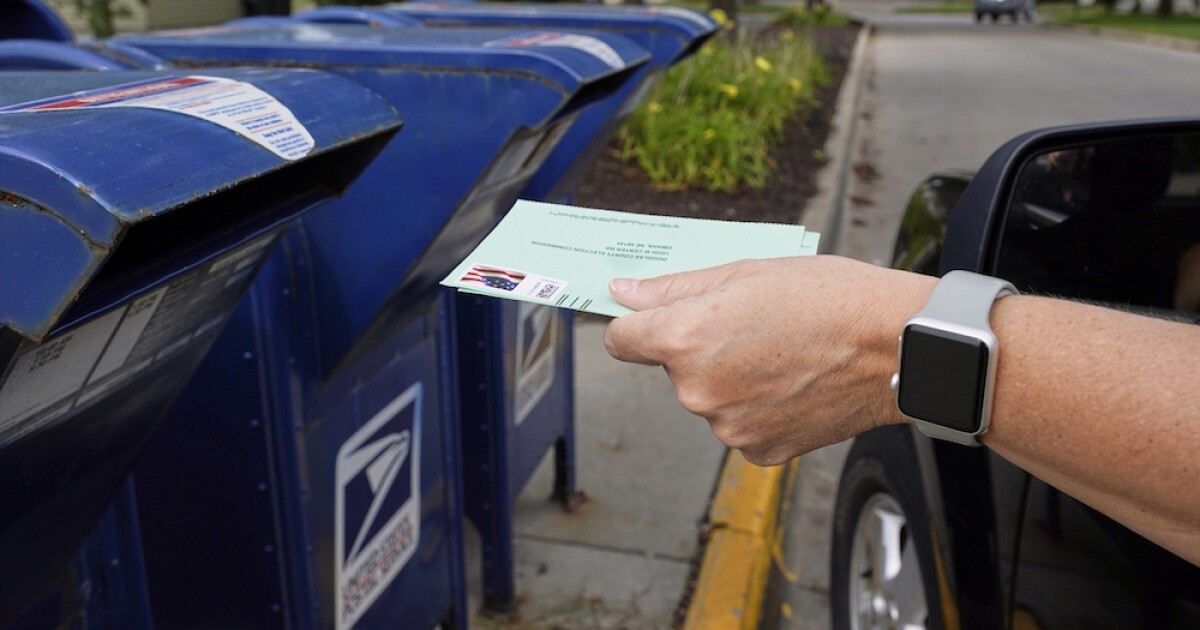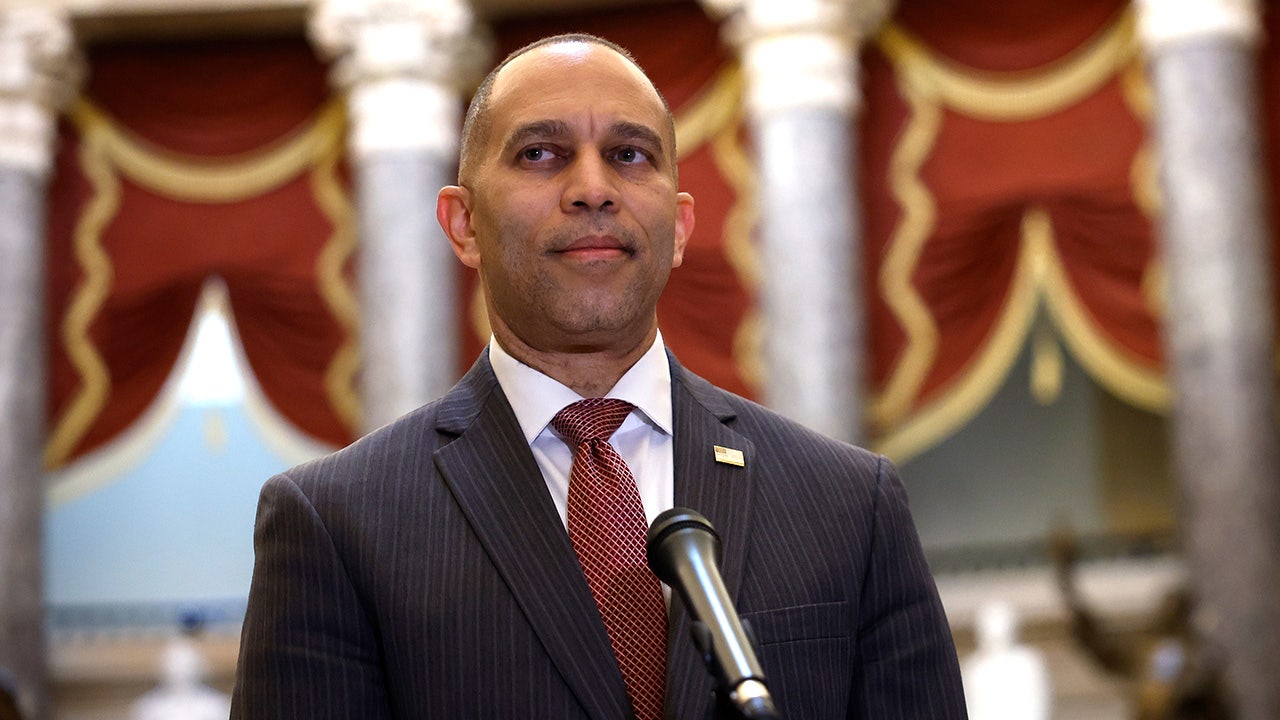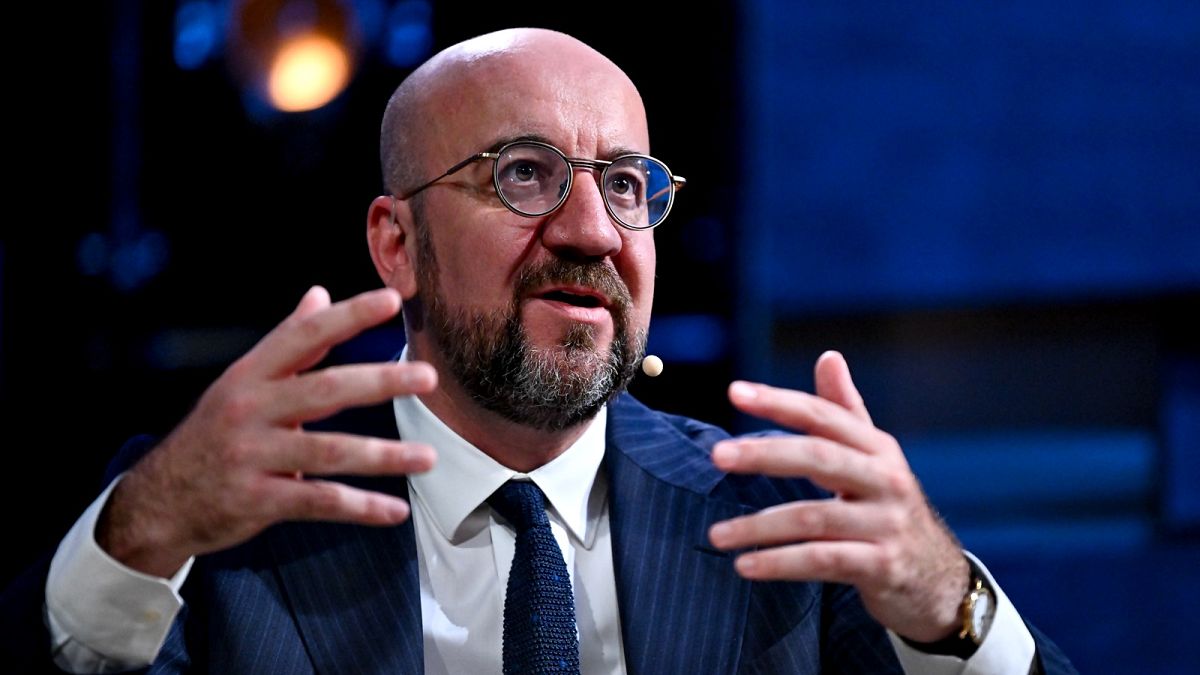Idaho
Major state budget process changes helped shape 2024 Idaho legislative session • Idaho Capital Sun

Some of the biggest changes during the recent 2024 legislative session involved how the Idaho Legislature’s powerful budget committee sets the state budget.
Prior to the session, Rep. Wendy Horman, R-Idaho Falls, and Sen. Scott. Grow, R-Eagle, announced several changes to how the Joint Finance-Appropriations Committee operates. Horman and Grow serve as the co-chairs of the Joint Finance-Appropriations Committee, or JFAC, which sets every element of the state budget.
The changes affected everything from how the state budget was broken up and set to how the committee’s daily meetings were conducted.
“There is no question the changes were significant,” Rep. Britt Raybould, R-Rexburg, said in an interview at the Idaho State Capitol.
For the first time in recent memory, JFAC broke state agency budgets into two different pieces. For the first piece, a version of last year’s budget – with the one-time spending money and new spending requests taken out but only partial placeholder salary increases for state employees factored in – was put forward as a bare bones budget intended simply to keep the lights on. Horman and Grow called this a maintenance of operations budget, or a maintenance budget.
Then, maintenance budgets for more than 100 state agencies and divisions were lumped together in 10 larger maintenance budgets that collectively spent more than $5.1 billion in state general fund spending.
At first the rollout was rocky. On Feb. 2, during a day Horman was absent, 12 of JFAC’s 20 members rebelled against the maintenance budgets by passing new standalone budgets that they said truly reflected maintenance budgets.
But on Feb. 7, the Idaho House narrowly passed the original maintenance budgets, essentially siding with the process Horman and Grow outlined.
For the second piece of the budget, JFAC considered the agencies’ new spending increases, budget line items, some replacement items and other new requests separately in new budget enhancements.
Horman and Grow said the new budget procedures increase transparency and allow JFAC members to really scrutinize and understand the new spending increases.
Horman and Grow also changed JFAC’s daily public budget hearings. Instead of the regular three hour daily meetings, JFAC conducted a roughly 90-minute public budget meeting each day and then broke into smaller, private working groups to actually work on setting the budgets. Horman and Grow said changing up the schedule was about formalizing the working group process. Working groups regularly met privately during previous legislative sessions, but had to do so on their own time, such as during lunch or in the late afternoons or evenings. Now, they had dedicated time to work, Horman and Grow said.
How did Idaho’s budget changes work this year?
After 94 days in session at the Idaho State Capitol in Boise, legislators adjourned the 2024 legislative session for the year April 10.
With the session in the rearview mirror, Horman said the changes were successful. She told the Sun the general fund spending increase in the fiscal year 2025 budget was 1.7%, down from 12% a year earlier. As the influx of federal COVID-19 stimulus funding is spent down or expires, Horman said the state needs to be focused on living within its budgetary means.
“What we have done is put in a building block of moving from essentially compliance to performance budgeting,” Horman told the Sun. “We wanted to make sure that Idahoans were not stuck with the government they purchased during the pandemic when we were swimming in cash that we can no longer afford based on our current revenues.”
During the days immediately before and following adjournment, Idaho legislators gave the new budget changes mixed reviews.
Some, including House Speaker Mike Moyle, R-Star, and Sen. Scott Herndon, R-Sagle, were extremely supportive.
Numerous legislators from both major parties voiced support for the working groups and setting aside dedicated time for the working groups.
But some legislators from both major parties voiced concerns or at least questions about the use and definition of maintenance budgets.
Here’s what legislators said about the new Joint Finance-Appropriations Committee budget process
Sen. Scott Herndon, R-Sagle:
“The work groups worked great,” Herndon said. “So that is a vast improvement over JFAC last year. It allowed us to really work with the same people regularly, on a weekly basis, and prepare budgets in the categories that we chose to work in.”
“Breaking out the two budgets … You pretty much have your base couple of items and then all the enhancements,” Herndon said. “Sure enough, for the first time since 2019 we actually defeated some budget bills on the Senate floor. And we were able to make some savings. We made the savings in two ways this year. It’s not only that we defeated some budget bills on the floor and then sent them back and trimmed them a little bit. But also the work groups enabled us to cut stuff ahead of time that never made it in there. So you have an agency request and the governor’s recommendation, and not all of those made it into our motions in JFAC, and that didn’t happen last year. So I think that really worked better this year. I felt more like everybody was on a team working together. We all understood each other. And when we’re in the work group, people could prepare to meet their colleagues’ desires as well. So I think that worked great.”
Rep. Brooke Green, D-Boise:
“I actually enjoyed the working groups,” Green said. “I think there was a lot of value to it. Working groups provided an opportunity for us to come in and understand what our colleagues’ issues were. We compromised and we know we came out of the working groups a lot of times with consensus behind a budget bill. So I would say that was a big piece of it, although we were here a lot longer and I think we did put a significant amount of time into our budgets.”
House Speaker Mike Moyle, R-Star:
“Change is sometimes difficult, right? It’s uncomfortable,” Moyle said. “And you saw that at the start of the session, you saw the dynamic with the House and the Senate leadership and JFAC and what happened there. But I think that where we ended up is positive for the state of Idaho. I hear a lot of compliments. We got the baseline out of the way and then we had more discussion on the add-ons. I think it’s more transparent. But again, it’s a new process. I assume we will see a few more adjustments next year as we try to make it more user friendly. And I think overall it’s good for the state of Idaho and the taxpayers. And I think that most people that were involved with it now support it more than they did before. There was a little hiccup but even some of our legislators that were scared at the first have mentioned how much of a better process it is. And you’re having more meetings on the budget and there is more input on the budget. And they are coming out with better budgets. And they understand the budgets when they present them on the floor better because they’ve had more time to work through them. I think overall it is a great improvement. Will there be little adjustment? Yes. Are there hiccups when you start something new? Absolutely. But I think overall it will benefit the state immensely over time.”
Rep. Britt Raybould, R-Rexburg:
“From where I’m sitting I still think the representation that the budgets that were passed at the beginning of the session were maintenance didn’t accurately reflect what was in the budgets,” Raybould said. “To me, when we say maintenance, my assumption is that that reflects both statutory requirements as well as things like the non discretionary adjustments that we are required to do through law because of formulas that exist within Idaho law. That to me, if you want to talk about maintenance, maintenance of operations, means we are in compliance with state law.”
“There other challenge that I see is that we were putting all legislators in a position where they were taking two votes on two separate budgets without the ability to have a clear representation of – whether you want to talk about it from a division standpoint within some of the larger agencies, or the agencies or offices as a whole – at no one time was any individual presented with the opportunity to take a vote on a budget in its entirety,” Raybould said. “That segmentation to me made it difficult, I think, for legislators to make an assessment as to a budget in whole, which is what we have done historically and previously in prior legislatures.”
Rep. Wendy Horman, R-Idaho Falls:
“From my perspective, I am very pleased with the outcome of the change in process,” Horman said. “I think the goals we had of greater transparency and accountability were achieved by separating base spending from growth spending. We now can see those separate percentages. Now that we have stronger tools in place around transparency and accountability, now let’s move to a conversation about performance. Are you getting the outcome for the taxpayers that you assert in the hearing or in your budget documents and how do you measure that? We are starting to take a look at what’s in the base budgets for the first time ever.”
“We might fall into a habit of thinking the money we appropriate is the agencies’ money or schools’ money or colleges’ money,” Horman said. It’s the taxpayers’ money”
Sen. Janie Ward-Engelking, D-Boise:
“It’s very clear that the maintenance budgets weren’t maintenance budgets,” Ward-Engelking said. “They didn’t have replacement items. They didn’t have nondiscretionary, and they didn’t have the full (change in employee compensation) that needed to be in. I talked to the co-chairs and expressed that it is a change that we need to look at if we are going to proceed down this road. We basically did every budget twice, and it did not save time. I do not think it was more transparent.”
“There is some value in the working groups, and I think that some of the working groups went very well and there was additional time to do that process,” Ward-Engelking said. “Some of the working groups were more difficult, and I guess that’s probably (the) personalities on it. But I think there is some value in the working groups. I think the additional time is valuable. But I do not think we finished our budgets earlier this session. We finished them later, and there was less transparency as far as I am concerned. It basically gave some of our colleagues licenses to vote against every additional budget because they said, ‘we already have a maintenance budget, now we’re just growing government.’ And so it made every budget harder to get through the Legislature, and it required the Democrats making sure we were on board with it to get them through.”
Sen. Kevin Cook, R-Idaho Falls:
“There’s some good points and some bad points,” Cook said. “I still think the omnibus (original maintenance budget) wasn’t transparent. So I wasn’t trying to go back. That needs to be very, very clear. I wasn’t trying to go back. But the transparency with having all of those budgets wrapped up together, that’s where I had a problem. But you know what? We voted on it in caucus. Democracy did its job. And we said, ‘great, the rest of the caucus is on board’ so we stood down, and we supported it and we went through with it. In the end I think it was a good process, and so I’m not here to fight against it or anything else. I think overall it went well.”

Idaho
One-of-a-kind NASA jet donated to Idaho State University – East Idaho News

The DC-8 was the first and largest flying science laboratory for 37 years. | Logan Ramsey, EastIdahoNews.com
POCATELLO — The engines of a historic research jet roared as it flew low toward its new home.
On Wednesday, this DC-8 jet, which belonged to NASA and served as the first and largest flying science laboratory for 37 years, landed at the ISU Aircraft Maintenance Technology Program Hangar. Now, ISU students will get the opportunity to prepare for their field by training on this aircraft.
“This aircraft has served as a premier flying science lab, contributing to groundbreaking research, and now it embarks on a new journey here at Idaho State University that will significantly impact our students and their futures,” said ISU President Robert Wagner.
While many people think of rockets when they think of NASA, the organization’s research extends below the stars. For nearly four decades, the DC-8 assisted scientists in their research by gathering useful data.
“I’ve been part of missions where we do air-quality research, so we’re flying low over big cities like New York and Chicago to get air quality data,” said Kirsten Boogaard, the DC-8 deputy project manager of four years, in an interview with EastIdahoNews.com.
NASA also runs the Student Airborne Research Program, where students would come onboard the DC-8 and learn how to conduct scientific research.
“We always have grad students that are doing research real-time for their papers, their dissertations, real-time work on the aircraft,” Boogaard said.
Taylor McWane, product support manager at the Logistics Management Division Headquarters of NASA, said that it was a difficult decision to twilight the aircraft that had served NASA for so long.
“You have to analyze the budget and make the determination of, ‘Does NASA have the resources to keep this older platform up and running for the next several years?’ And oftentimes, you have to make that difficult call and say no,” McWane said.
So how did this research plane ended up in the hands of an Idaho university?
Receiving this donation, the largest ever made from the federal government to the state, was spearheaded Ed Foster, a clinical instructor and coordinator with the College of Technology.
“His hard work and commitment have been instrumental in making this day possible, and we are incredibly grateful for his efforts,” Wagner said.
Wagner also offered thanks to Alan Evans — an ISU alumnus and the Pocatello Regional Airport manager — as well as the airport’s whole staff.
Dean Jerry Anhorn of the College of Technology first became familiar with the prospect of receiving the jet when he got an email from Foster.
“Hey, suppose we could get this jet?” Anhorn said that the email read. “And it’s sitting here today.”
But Foster’s work began many months before that, when he found out that Idaho was selected by the federal government to receive the jet. To do this, Foster and Evans had to coordinate to make sure they would have the space to hold it.
ISU was the only entity in Idaho to apply to receive the donation, Foster said, so if they hadn’t been able to take it, the DC-8 would’ve gone to a different state.

Anhorn said that the College of Technology prides itself on a hands-on approach to education, so receiving this aircraft was a pivotal moment.
“This is more than just a learning enhancement. It is the preparation for real-world challenges. The DC-8 will serve as an integral part of our curriculum, where students will conduct actual maintenance and repair tasks,” Anhorn said.
Foster is excited that his students will have the opportunity to train on the DC-8.
“It’s actually rare for programs like ours across the country to have one because most people still want to use these aircraft, so we’re very fortunate and excited about that,” Foster said.
Boogaard said that throughout its use, the DC-8 has benefited education, and she’s happy to see it continue to serve students.
“Now it (will) continue that for future generations on the aircraft maintenance side, and I think that that’s really a beautiful thing,” Boogaard told EastIdahoNews.com.

=htmlentities(get_the_title())?>%0D%0A%0D%0A=get_permalink()?>%0D%0A%0D%0A=htmlentities(‘For more stories like this one, be sure to visit https://www.eastidahonews.com/ for all of the latest news, community events and more.’)?>&subject=Check%20out%20this%20story%20from%20EastIdahoNews” class=”fa-stack jDialog”>
Idaho
Primary election that will determine the future of Idaho

Every two years one hears the next election will be one of the most important ever. The truth is every election is important because it determines the laws we live under, how we are taxed, and the kind of society we live in.
But it’s not an overstatement to say that next Tuesday’s primary election may be the most important election in recent memory. I say that after following Idaho politics for the past five decades, first as a journalist and now as an advocate for education.
With so much at stake, this election will decide whether we remain stuck in the quagmire of far-right extremism or reverse course to a politics focused more on improving the quality of life for all Idahoans, especially our youngest ones.
In significant ways, this election is unique given the warring factions in the Republican Party – the far-right personified by Chair Dorothy Moon and the self-proclaimed Idaho Freedom Foundation versus the “Main Street Republicans” who represent traditional conservative GOP values like fiscal responsibility, equal opportunity, and public education.
It is also unique by the historic amount of money pouring into our state from billionaires and their front organizations. The Dallas-based American Federation for Children (AFC) has invested $440,000 in the election. The Ohio-based Citizens Alliance has dropped another $390,000. And these are but two of the out-of-state operators influencing our primary election.
Just read what one “strategist” for AFC told Idaho Education News about his group’s plans: “If you’re a candidate or lawmaker who opposes school choice – you’re a target.”
Groups like the AFC want to defeat the Main Street Republicans and elect far-right legislators who will use our tax dollars to subsidize private school tuition and continue the culture wars against our librarians, educators, certain youth, and anyone else they don’t like. They cynically champion freedom in their propaganda, but elect politicians who lay siege to our public schools and vote to control our personal lives more and more.
The power behind these out-of-state billionaires and their front organizations is the limitless amount of money they can spend to elect their acolyte legislators. Their front organizations leave the impression that they are Idaho-based and supported by grass-root Idahoans. Don’t be fooled. They are not. Only their bank accounts make them 900-pound political guerilla fighters.
If you receive mail or follow social media, you have seen how ugly the attack ads are by these out-of-state organizations against our finest legislators who are committed to improving the lives of Idahoans rather than imposing their radical ideology on the rest of us.
The best antidote to these out-of-state extremists and their politics of personal destruction is to judge whether their attacks pass the smell test – do the charges ring true, are they based on facts, and are they using fear to manipulate us? Then decide who you trust most – an out-of-state dark money organization that is here today, gone tomorrow or a candidate you know from your church, school, business, or Rotary Club.
This election can be a turning point. It can be a move away from extremism and back to fundamental Idaho conservative values that have served our citizens well. The future is in our hands on Tuesday – not the hands of out-of-state billionaires who don’t really care about our state. Let’s show them what Idahoans are made of.
Idaho
Idaho voters asked to send in absentee ballots by end of day ahead of May primary elections

Idaho Secretary of State Phil McGrane is reminding voters to send in their absentee ballots for the May 21 primaries by May 15.
These ballots must be returned to the County Clerk Elections Office by May 21 to be counted on election day, so voters are being asked to submit them by the end of the day on May 15 to ensure they reach the office in time.
46.5% of the distributed ballots have made their way back to the clerk’s office so far. Completed ballots must be returned to the offices by mail, in person, or via an official ballot drop box by 8 pm on election day.
Other important upcoming dates for the May 21 elections are:
- Early Voting: Now through Friday, May 17 at 5 pm
- Election Day: Tuesday May 21, from 8 am to 8 pm
- Absentee Ballots Due: Tuesday, May 21 at 8 pm
The races in the May 21 primary include the races for United States Representative, State Senate, State House of Representatives, County Commissioner, County Sheriff, County Prosecuting Attorney, Judges, and other local races and measures.
More information about the May 21 primaries is available to view at VoteIdaho.gov.
-

 News1 week ago
News1 week agoCompass Direct LLC’s 2024 Registration in North Carolina
-

 World1 week ago
World1 week agoTech compliance reports, Newsletter
-

 News1 week ago
News1 week agoMan, 75, confesses to killing wife in hospital because he couldn’t afford her care, court documents say
-

 News1 week ago
News1 week agoColumbia University cancels its main commencement ceremony after weeks of turmoil
-

 World1 week ago
World1 week agoPentagon chief confirms US pause on weapons shipment to Israel
-

 World1 week ago
World1 week agoConvicted MEP's expense claims must be published: EU court
-

 Politics1 week ago
Politics1 week agoRFK Jr said a worm ate part of his brain and died in his head
-

 Politics1 week ago
Politics1 week agoPresidential polls show deadlocked race as party conventions quickly approach




















